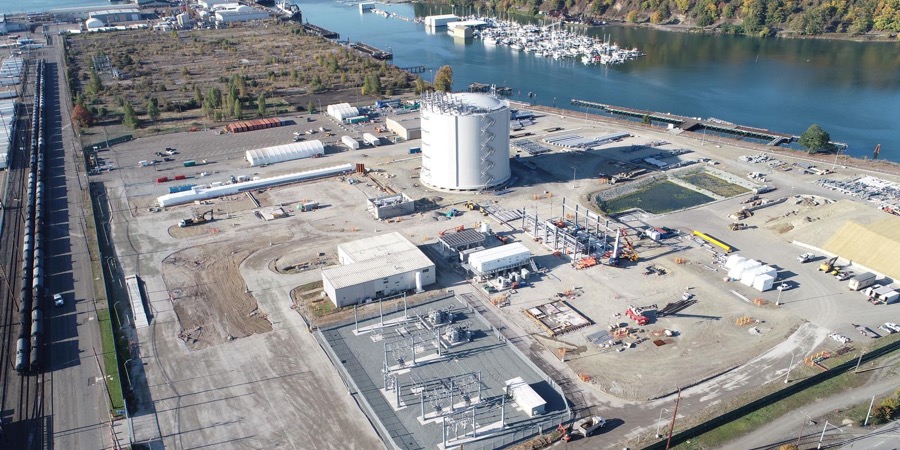New markets for LNG are emerging due to the environmental benefits of natural gas (lower carbon and particulate emissions), said McDermott’s CB&I Storage Solutions.
CB&I Storage Solutions said LNG’s low cost compared with competing fuels, and the continuing advancements in transportation. These new markets are leading to the development of small-scale LNG plants, which generally have lower CAPEX requirements and can be built more quickly than typical baseload LNG facilities, often using modularised components.
Additionally, CB&I Storage said small scale LNG is scalable; operators can add capacity as market demand increases. A growing portion of the small scale LNG market involves end uses of LNG in its liquid form, rather than the traditional model of liquefaction, transport, and regasification into an existing pipeline distribution system.
A growing portion of the small scale LNG market involves end uses of LNG in its liquid form, rather than the traditional model of liquefaction, transport, and regasification into an existing pipeline distribution system. Small scale LNG plants generally serve specific markets or industrial customers.
It listed some of the key drivers of the small scale LNG market as:
- LNG is replacing diesel as fuel for high horsepower vehicular transport applications including locomotives, heavy trucks and fleet vehicles, and large mining trucks.
- LNG is the cleanest burning fossil fuel and hence is seen as more environmentally friendly and contributing to sustainability goals.
- Stricter environmental standards are driving the use of LNG as a bunkering fuel in the marine industry. LNG as fuel can compete economically with the cost of ultra-low sulphur fuel or the installation of scrubbers.
- Effective 1 January 2020, the International Maritime Organisation (IMO) implemented a new regulation mandating an 80% reduction in sulphur emissions from vessels operating in international waters. Under the IMO 2020 standard, ships are having to use marine fuels with a sulphur content of no more than 0.5% vs the previous limit of 3.5%.
- Use of LNG for power generation is growing in remote areas which lack an existing gas pipeline infrastructure, where LNG can be shipped or trucked to small utility customers (so-called ‘virtual pipeline’ or ’stranded demand’ projects).
- The drive to reduce gas flaring, particularly in U.S. shale oilfields, is prompting producers to monetise previously flared gas via LNG production.
- There is an increasing desire by utilities to provide back-up fuel storage via LNG to handle disruptions to the natural gas supply in the pipeline. In addition to these newer applications, development of traditional LNG peak shaving facilities (which are in essence small scale LNG plants) is ongoing. Utilities use these plants to liquefy and store natural gas to meet seasonal demand peaks. Peak shaving is one of the most common uses of LNG in the U.S.
For more information visit www.mcdermott.com














